Special Report
Natural Landmarks Already Damaged or Destroyed by Climate Change
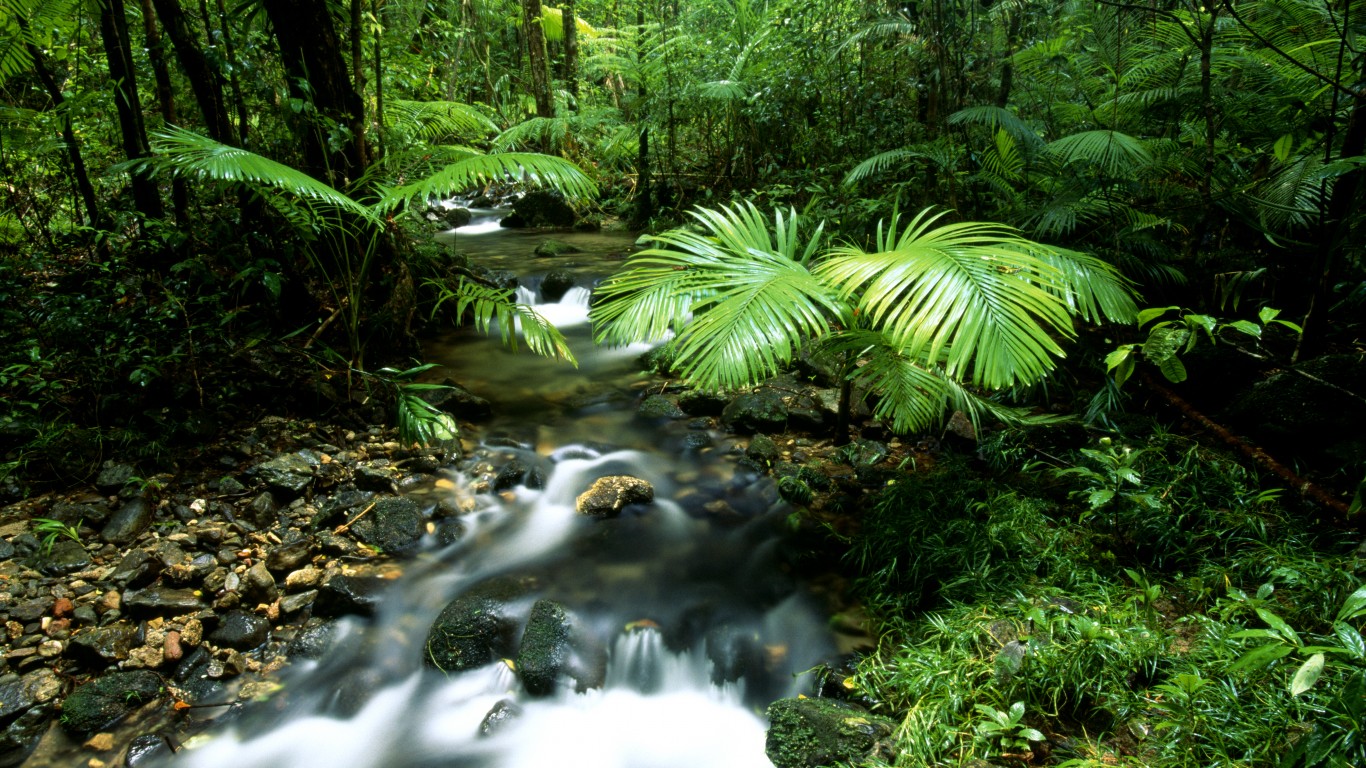
Published:

Most people who will never travel to more exotic locations will nonetheless recognize images of Mount Kilimanjaro topped with its legendary snows or the Great Barrier Reef and its rich marine life. But these iconic natural wonders, along with many others, are losing their struggle with climate change and may be completely lost to future generations.
As temperatures warm, sea levels rise, and storms intensify, causing food insecurity and displacement of entire populations, natural landmarks that may seem invulnerable to the ravages of climate are also seriously threatened. (These are the 20 countries responsible for nearly all global emissions.)
To find natural landmarks already damaged or destroyed by climate change, 24/7 Wall St. reviewed several sources, including International Union for Conservation of Nature’s Climate change now top threat to natural World Heritage – IUCN report, international environmental organizations, and adventure travel companies, among other sources.
The IUCN study found that 30% – 83 out of 252 – of natural World Heritage sites are threatened by climate change. Their status is described as being “of significant concern,” and 7% of all sites, including the Great Barrier Reef, are classified as “critical.”
While invasive species, human activity, and traditional weather patterns all take their toll on the natural world, the threats from climate change have overtaken other factors in the loss of natural landmarks. Storm surges are pushing salt into farmland and freshwater reserves; sea level rise is threatening the very existence of islands and atolls; rising temperatures are melting glaciers and drying up lakes; and heat and drought are inviting the spread of highly destructive wildfires. (These are the 30 most destructive wildfires in the U.S. this century.)
These are some of the world’s natural landmarks that have already experienced severe damage from climate change.
Click here to see natural landmarks already damaged or destroyed by climate change
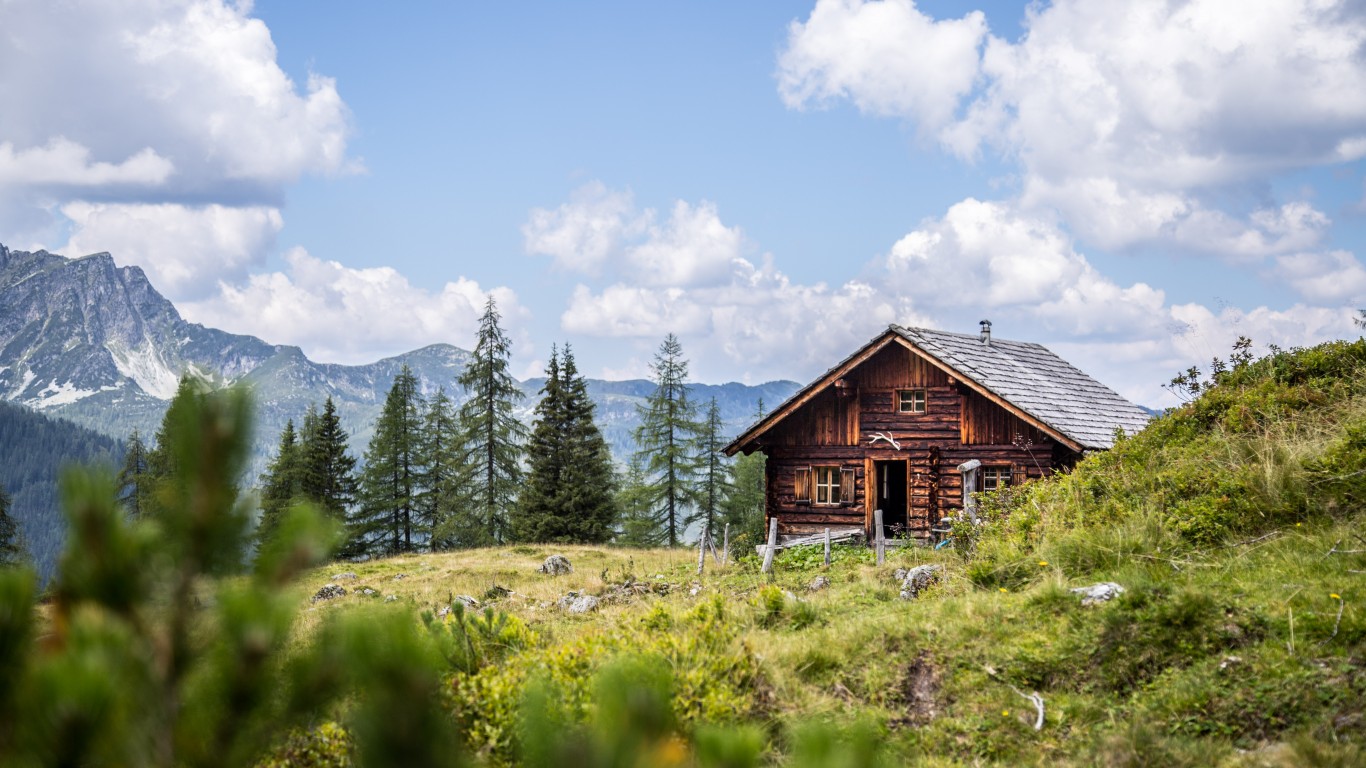
Alps
> Location: France, Switzerland, Monaco, Italy, Liechtenstein, Austria, Germany, and Slovenia
Just 15 years ago, the glaciers atop the Alps held 10% more water that they do today, and the ice continues to recede. The loss of glacial ice signals a slow march to extinction for the unique Alpine plants that are now migrating higher at a rate of 0.05 to 4 meters a decade, being replaced by lowland flora.
[in-text-ad]
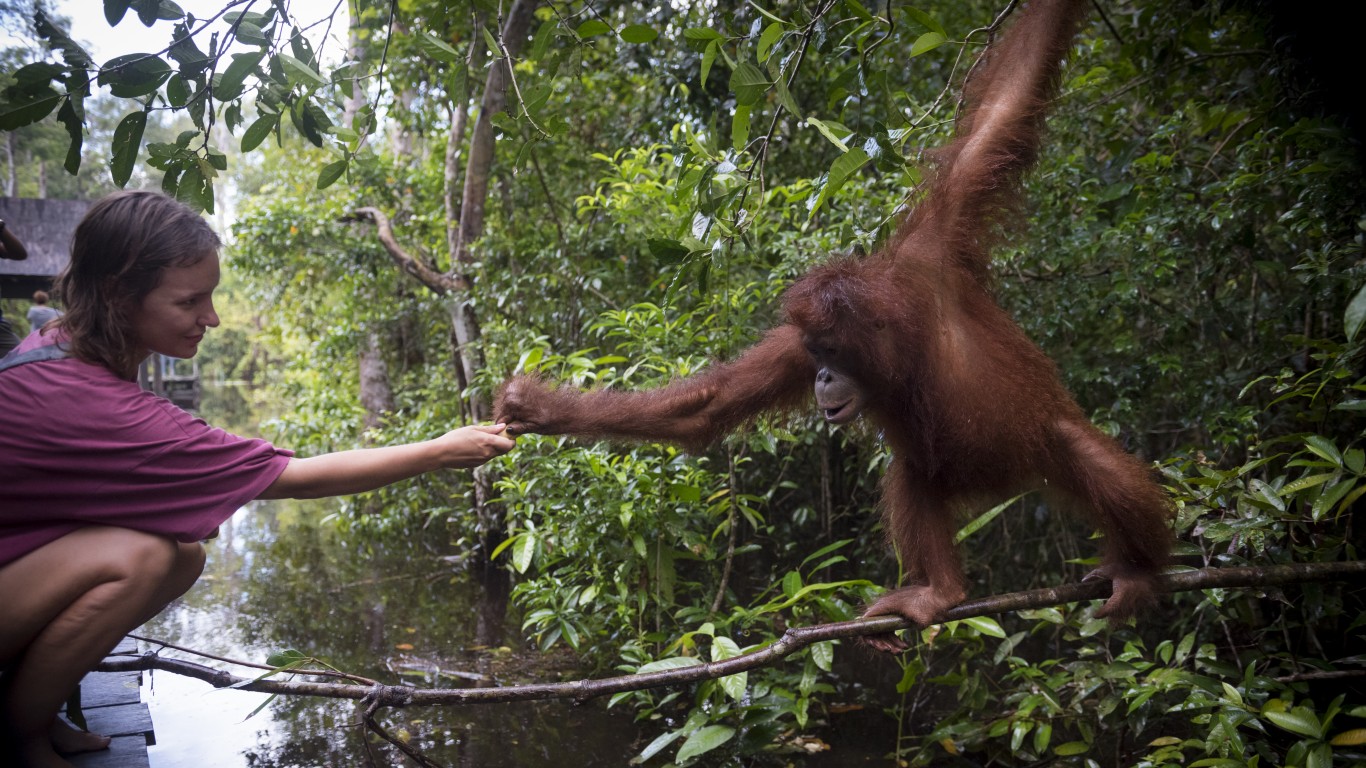
Borneo’s Rainforest
> Location: Borneo
Borneo has some of the highest concentrations of forestland and biodiversity in the world, but heavy deforestation and the effects of climate change are working in combination to threaten Borneo’s increasingly endangered species, including the orangutan. In particular, wildfires have increased in intensity over the last two decades as temperatures rise and Borneo suffers from drought and a drying out of the landscape.
Chacaltaya Glacier
> Location: Bolivia
Glaciers are particularly vulnerable to climate change and are shrinking rapidly all over the planet. High in the Andes, over 3 miles above sea level, the Chacaltaya Glacier was, until the 1990s, the highest ski center in the world. In the few years between 1992 and 2005, Chacaltaya Glacier lost 90% of its surface area and 97% of its volume. It is now gone.
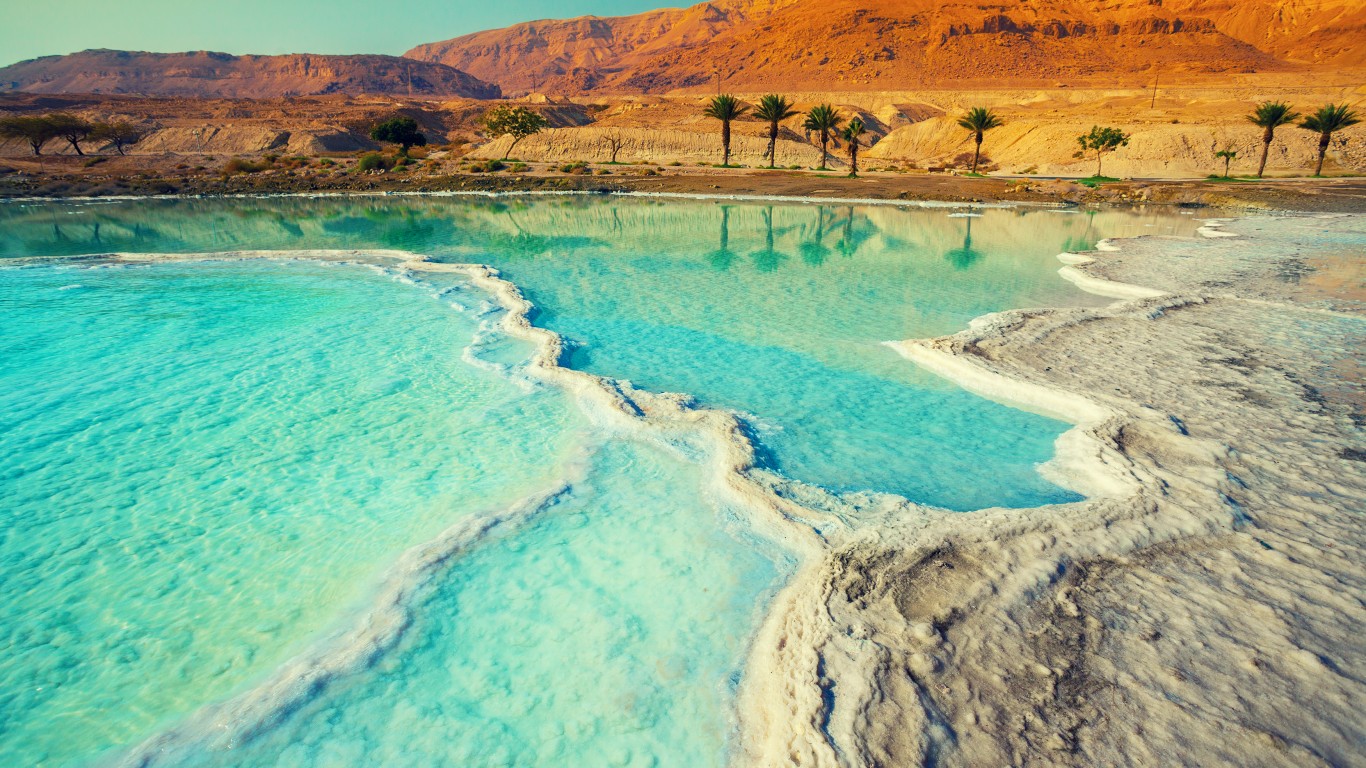
Dead Sea
> Location: Jordan and Israel
Climate change is warming many of the world’s lakes faster than the oceans, causing them to shrink, some at a startlingly rapid rate. While the Dead Sea has suffered from direct human intervention, such as diversion of water supplied by the Jordan River and mineral extraction, much of its volume has been lost to evaporation attributed to temperature rise. In the last half century, the Dead Sea has lost one-third of its surface area, and continues to shrink by 1 meter every year.
[in-text-ad-2]
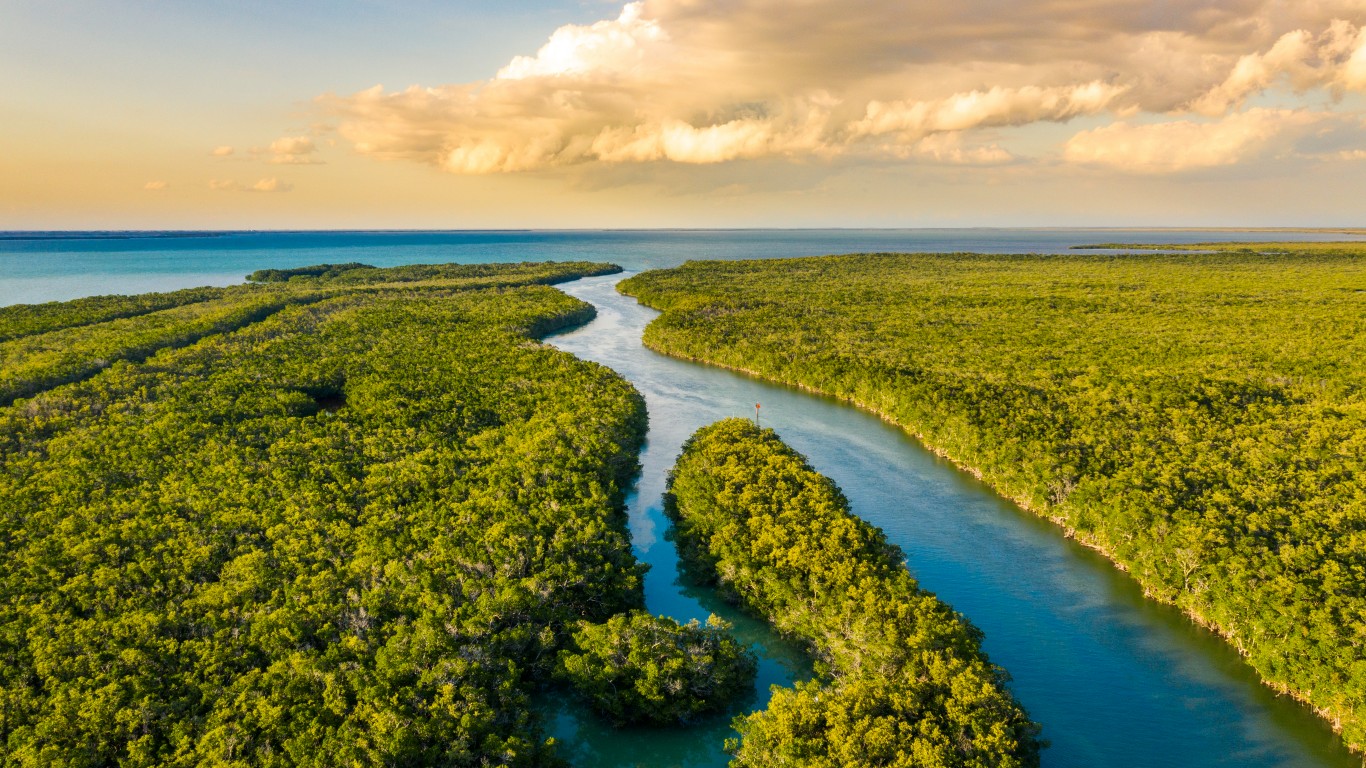
Everglades
> Location: Florida, US
With its low elevation and vulnerability to storms, the state of Florida is seriously threatened by climate change. Florida’s iconic Everglades National Park, at the state’s southern tip, is experiencing an increased movement of salt water into its freshwater interior, and increased salinity in its coastal soils. Caused in large measure by the sea level rise and storm surges brought on by climate change, the sea salt intrusion threatens the unique species of plant life found in the Everglades as salt-friendly flora, such as red mangroves, make their way inland.

Giant Sequoias
> Location: California, US
Over the millenia, fire has been an important friend to the Giant Sequoias of California’s Sierra Nevada, promoting seed dispersal and clearing underbrush, but climate change is turning California’s wildfires powerfully destructive. Rising temperatures and drought have increased the intensity and frequency of the fires, with tragic results among the historically resilient trees – each with a diameter of 4 feet or more. There have been six such wildfires between 2014 and 2021, destroying 85% of the state’s giant sequoia groves. By contrast, 25% was lost in the preceding century.
[in-text-ad]

Glacier National Park
> Location: Montana, US
The glaciers of Glacier National Park began shrinking at the end of the little ice age in 1850, but the shrinking has greatly accelerated in recent decades. With park temperatures rising at twice the global average, the number of named glaciers (those with over 1 square km) has been reduced from 35 to 26 between 1966 and 2015. Some have lost 80% of their surface area. The loss of ice threatens tourism, wildlife habitat, native plants, and underwater archeology.

Great Barrier Reef
> Location: Australia
Australia’s Great Barrier Reef is perhaps the world’s most famous example of the damage wrought by climate change. Rising ocean temperatures are weakening the hundreds of species of coral that make up the reef, reducing their resiliency and diminishing their ability to reproduce. It is estimated that half of the coral in the miles long reef have been lost in the last 25 years.
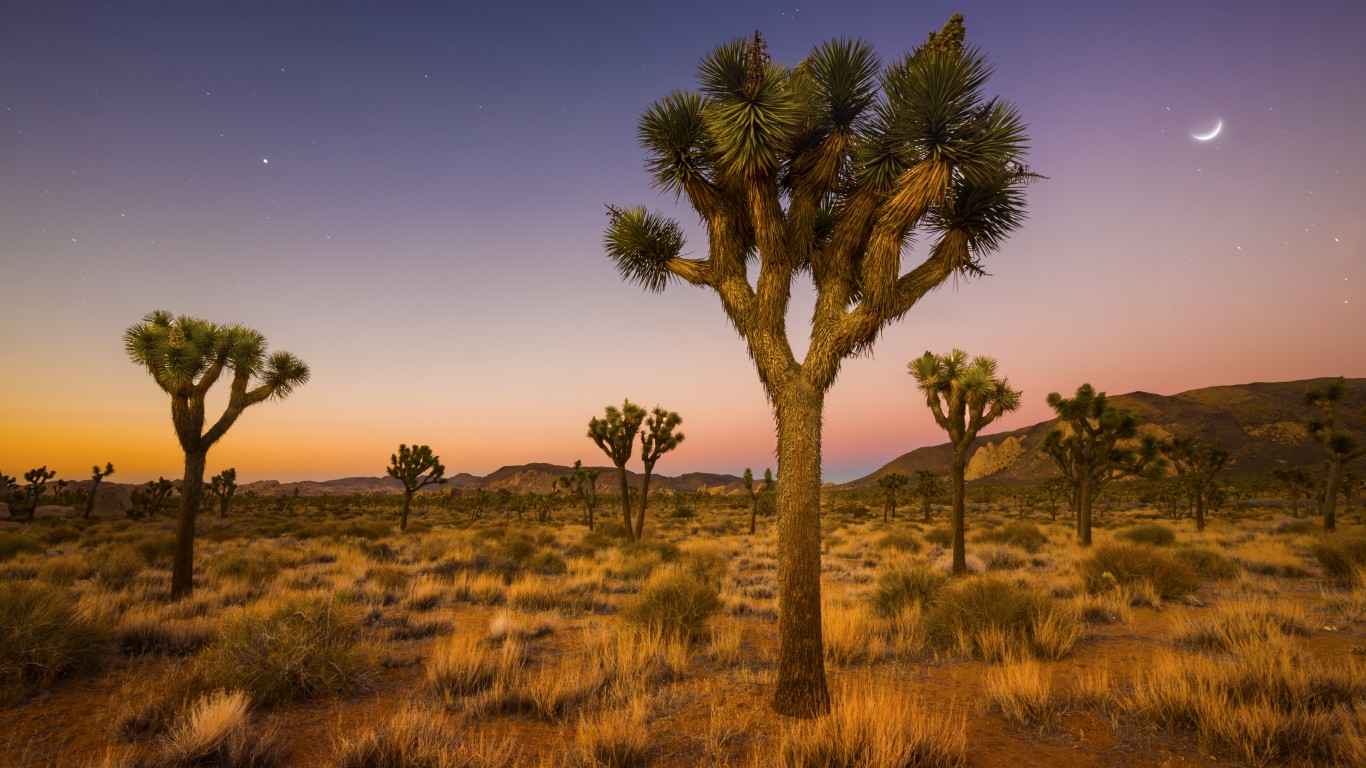
Joshua Tree National Park
> Location: California, US
Over the past century the average temperature in Joshua Tree National Park has risen by 3 degrees Fahrenheit, while precipitation has dropped by 39%. The change in climate has meant drier conditions, resulting in fewer Joshua tree seedlings and loss of animal habitat, particularly for birds, whose numbers are diminishing. Adding to the park’s climate problems, the drier environment has facilitated more frequent wildfires, an immense threat to the region. In 2020, Dome Fire in 2020 burned 43,000 acres and over a million Joshua trees in the nearby Mojave National Preserve.
[in-text-ad-2]
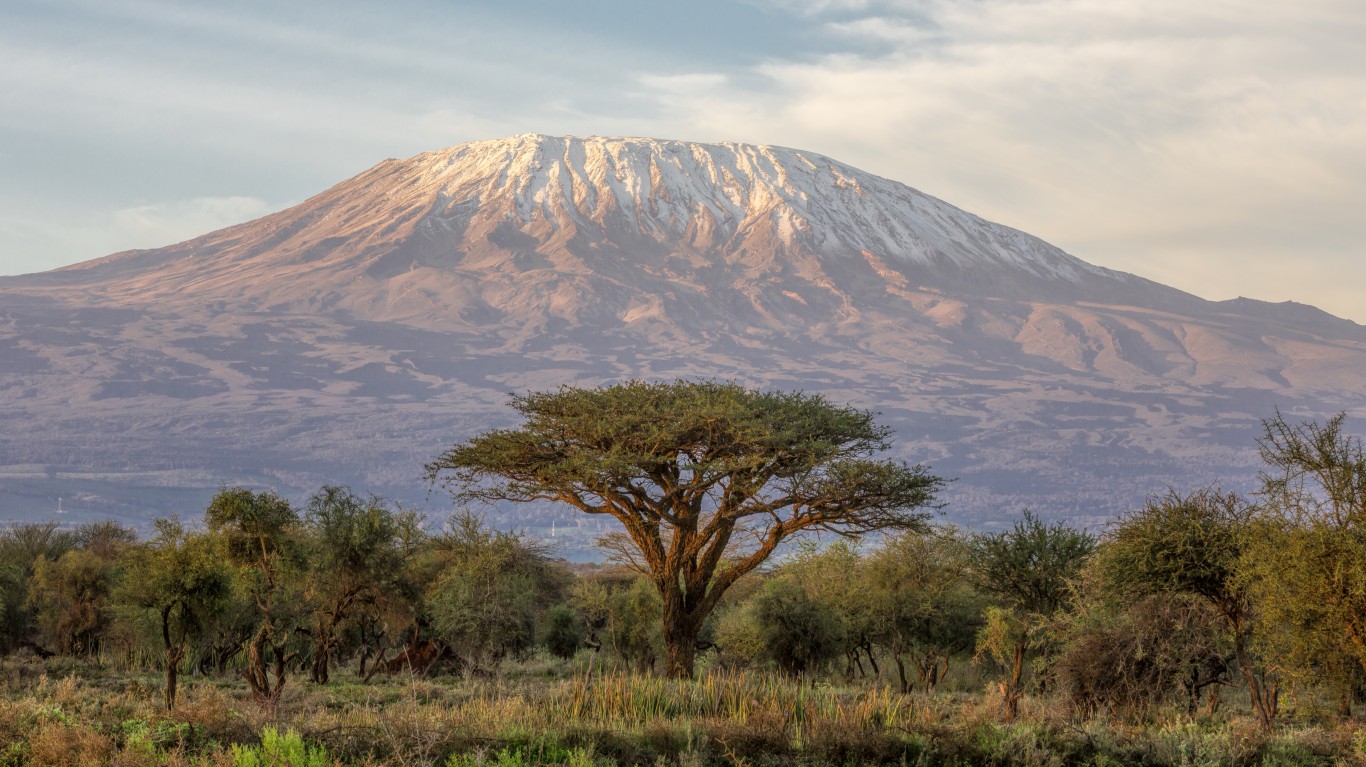
Kilimanjaro
> Location: Tanzania
Though all of Africa contributes less than 4% to the world’s output of greenhouse gasses, it is suffering disproportionately from the early ravages of climate change. With land and ocean temperatures rising faster than in most of the rest of the world, the continent is experiencing punishing droughts, floods, and heat, affecting habitability, food production, and health. It has also given the world one of the most visible and striking warnings about climate change, the melting of the iconic “snows of Kilimanjaro.” Along with its twin to the north, Mt. Kenya, Kilimanjaro is rapidly losing its mountaintop glacier due to rising temperatures and diminished precipitation. The ice is likely to completely disappear in the next 20 years, and that of Mt. Kenya in the next 10.
Maldives
> Location: Indian Ocean
Maldives is an archipelago of coral atolls, some of which support a tourist economy. Rising seas are threatening the tourist industry, but also the reefs that support the nation’s critical fisheries. Of even greater concern is the threat of catastrophic inundation since 80% of the islands’ surface area is 1 meter or less above sea level. Already, beaches are eroding rapidly and fresh groundwater reserves have been all but destroyed by salt water intrusion.
[in-text-ad]

Pantanal Wetland
> Location: Brazil, Bolivia, Paraguay
Located primarily in Brazil and sprawling into Bolivia and Ecuador, the Pantanal is the world’s largest inland wetland, and one of the most biodiverse places on Earth. The health of the ecosystem depends on fires started by lightning strikes and by land clearing, but in recent years fires have become a growing threat to the very survival of the wetland and its creatures. Increasing heat and drought have made fires ever more intense and destructive, with 2020 fires destroying 22% of Brazil’s share of the Pantanal.
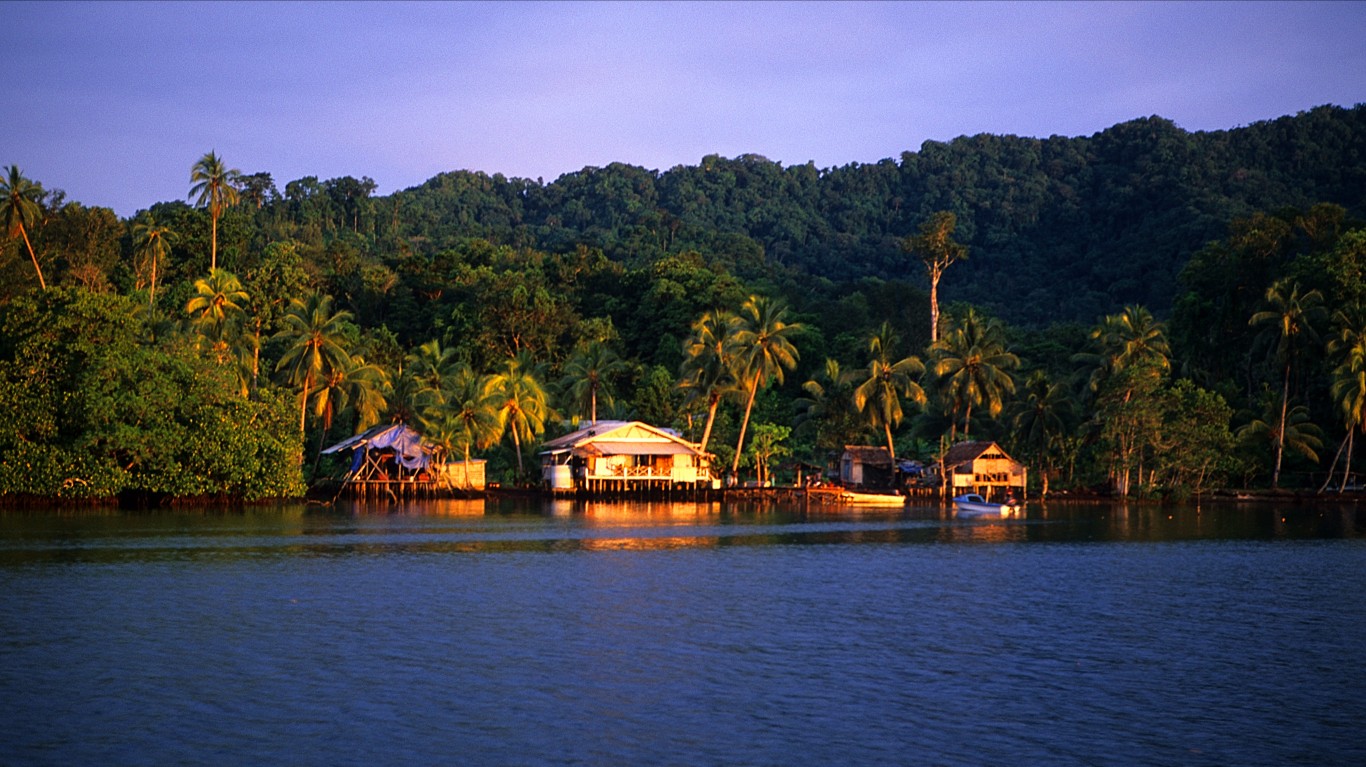
Solomon Islands
> Location: Solomon Islands
The Solomon Islands are a remote Pacific archipelago, and historically one of the most impoverished nations in the world. It is beset by ever more disastrous cyclones, storm surges, drought, and torrential rains, which have in turn led to a loss of land and fresh water, even as sea level rise threatens to submerge low lying islands in the coming decades. Today, these climate change impacts and resulting population displacement are causing extreme socioeconomic and political turmoil.
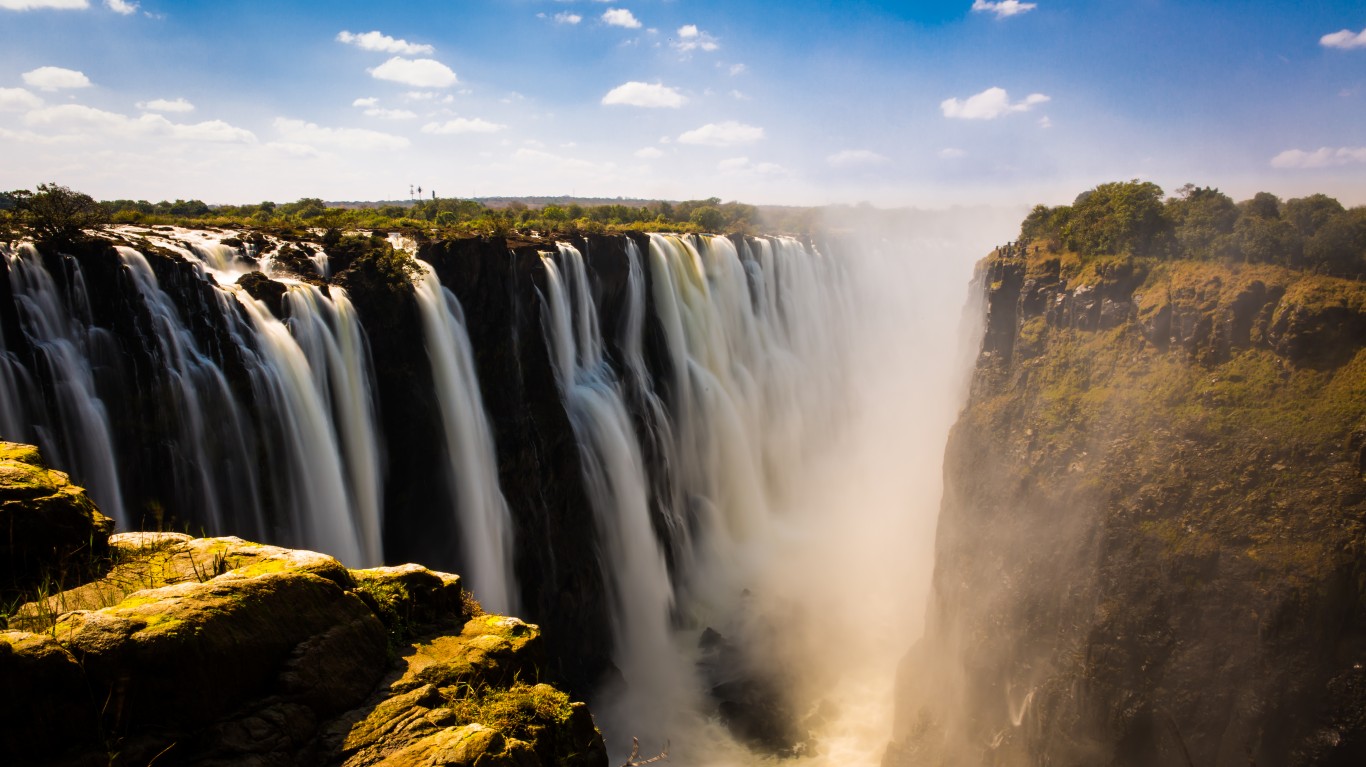
Victoria Falls
> Location: Zambia and Zimbabwe
Nearly a kilometer in length along the border between Zambia and Zimbabwe, the magnificent Victoria Falls has been one of Africa’s most perennially popular tourist attractions. Given the region’s dramatic shifts between dry seasons and the monsoon rains, it is not unusual for the falls to lose some of its flow during parts of the year, but in 2019, following a major drought, the magnificent Victoria Falls was reduced to a trickle. While one event does not define a trend, some see the extreme drought as likely attributable to climate change.
[in-text-ad-2]

Yellowstone National Park
> Location: Montana, Wyoming, Idaho, US
Since 1950, temperatures in Yellowstone have risen by 2.3 degrees Fahrenheit. Spring starts earlier, and fall lasts longer, and what might have been snow events in the spring and fall are now rain events, causing the annual snowpack to decrease by 2 feet. The drier park makes it more susceptible to wildfires, a fact that was dramatically demonstrated when, in 1988, wildfires damaged 800,000 acres of the park in the wake of a severe drought.
The thought of burdening your family with a financial disaster is most Americans’ nightmare. However, recent studies show that over 100 million Americans still don’t have proper life insurance in the event they pass away.
Life insurance can bring peace of mind – ensuring your loved ones are safeguarded against unforeseen expenses and debts. With premiums often lower than expected and a variety of plans tailored to different life stages and health conditions, securing a policy is more accessible than ever.
A quick, no-obligation quote can provide valuable insight into what’s available and what might best suit your family’s needs. Life insurance is a simple step you can take today to help secure peace of mind for your loved ones tomorrow.
Click here to learn how to get a quote in just a few minutes.
Thank you for reading! Have some feedback for us?
Contact the 24/7 Wall St. editorial team.